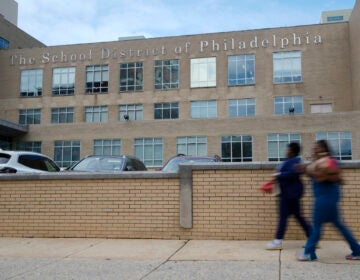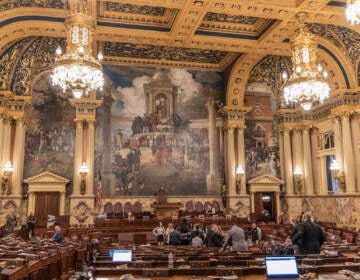Photo exhibit opening this week chronicles the ‘decline and destruction’ of Philly public schools
Listen-
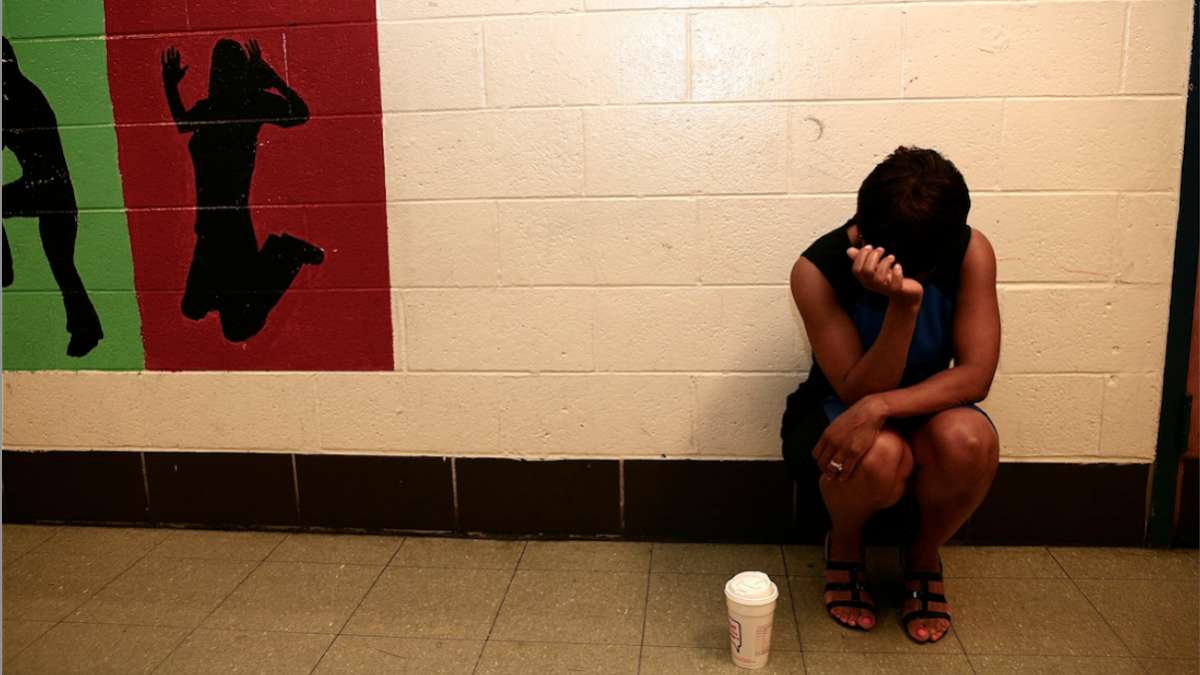
Fairhill Elementary Principal Darlene Lomax-Garrett was overcome with emotion as her school approached permanent closure. (Courtesy of Harvey Finkle)
-
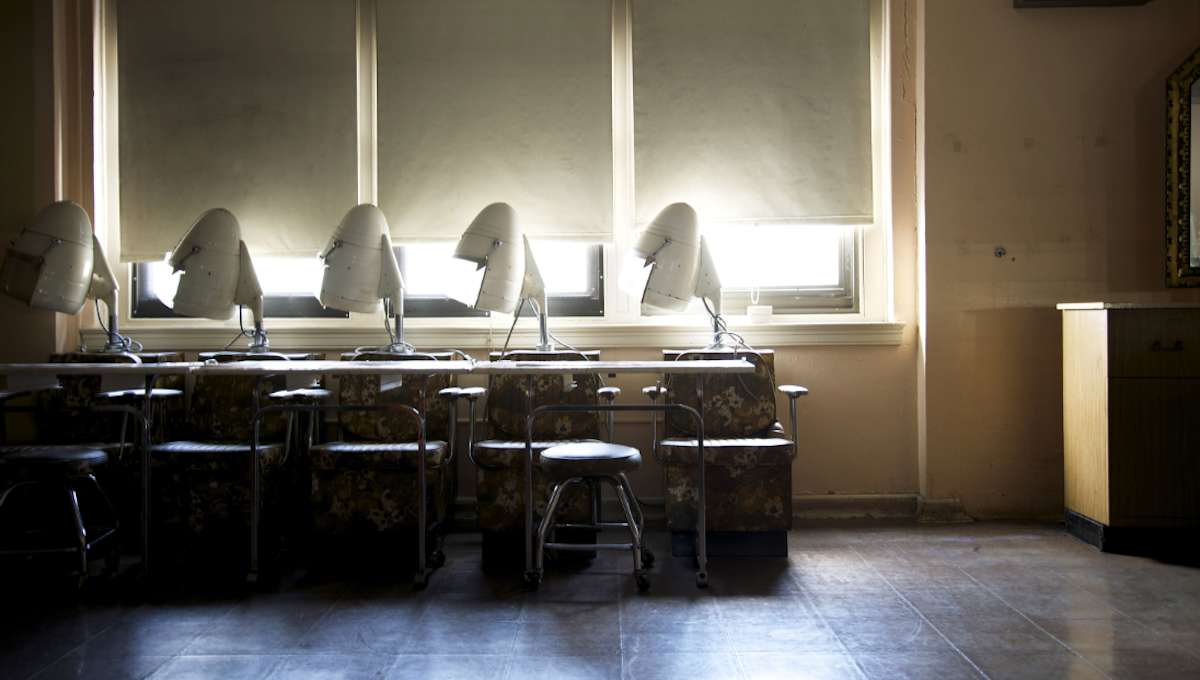
A view inside Edward W. Bok Technical High School, which closed in June. (Photo courtesy of Katrina Ohstrom)
-
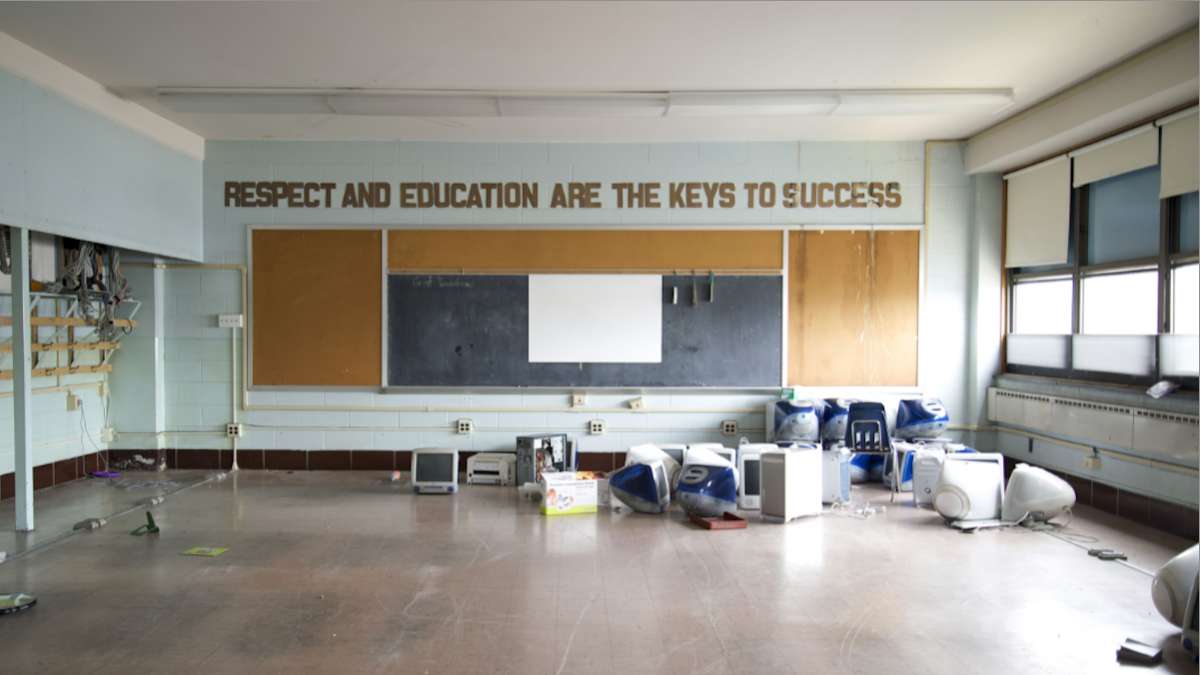
West Philadelphia's Joseph Leidy Elementary was also photographed. (Photo courtesy of Katrina Ohstrom)
-
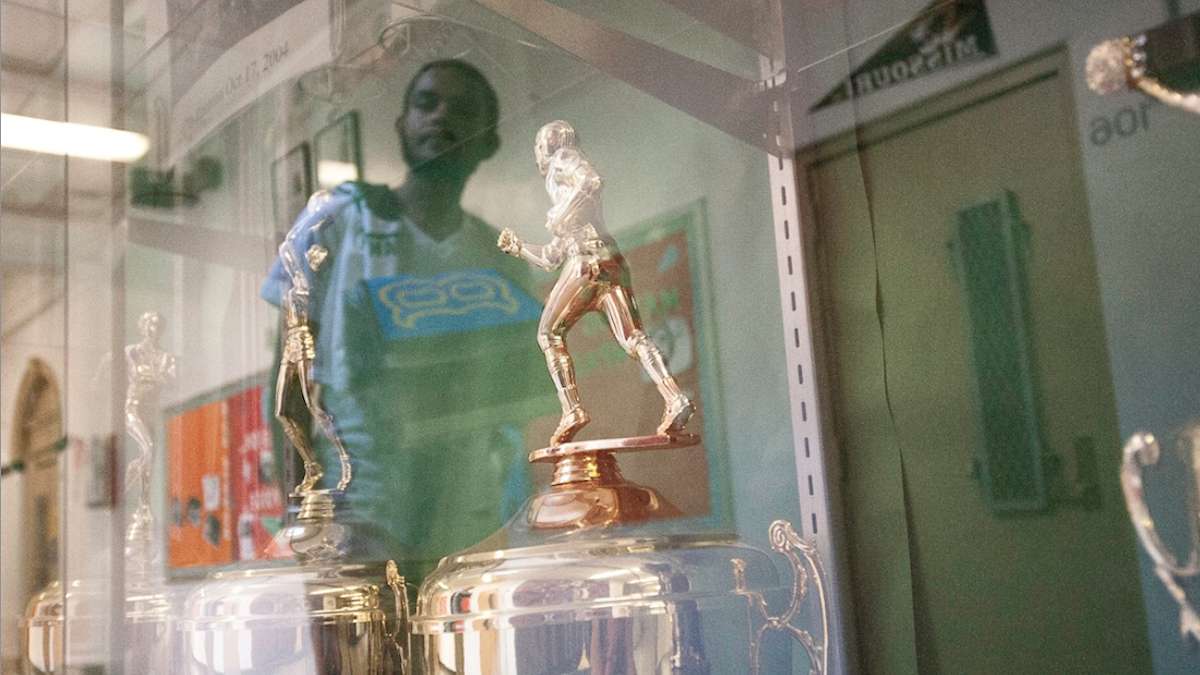
The 'Penn State Bound' photo was taken in the waning days of Germantown High School's 99-year tenure. (Courtesy of Laurie Beck Peterson)
-
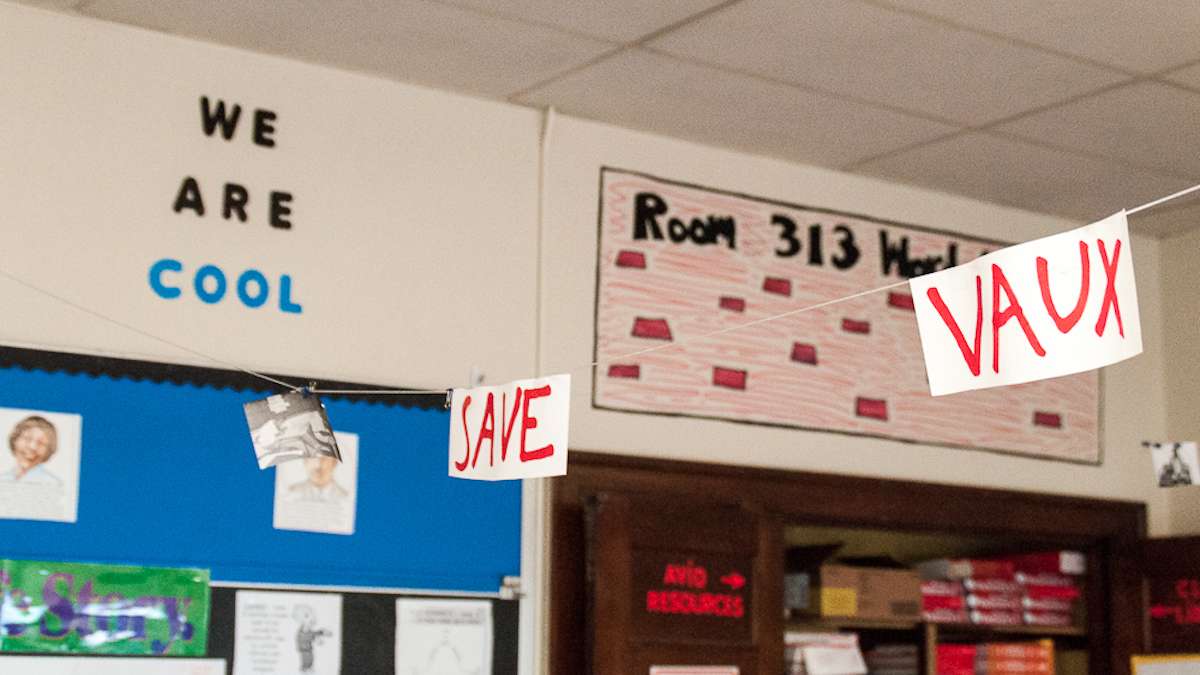
An artist from Germantown photographed the final days at Vaux High School. (Courtesy of Tieshka K. Smith)
Harvey Finkle stood on the third floor of Fairhill Elementary and snapped a photo of a sight he hadn’t seen in three decades of documenting Philadelphia’s public schools.
Crouched against the wall before him was longtime Principal Darlene Lomax-Garrett, her forehead resting gently in the palm of her hand.
“She was standing at first and knelt down where she was and began to cry,” said Finkle. “I had never seen a principal break down like that.”
Chronicling closures
The stirring image, taken the final week of the school year, is part of an upcoming exhibit at West Philadelphia’s Scribe Video Center that zeroes in on the 24 schools that closed for good in June as a result of the Philadelphia School District’s ongoing budget crisis.
The display’s 20, mostly color photographs are the work of the Philadelphia School Closings Photo Collective. The loose network of nearly 30 photographers divvied up the list in response to a call for action sent out by heralded artist Zoe Strauss.
At its core, Finkle, staff photographer for the Philadelphia Public School Notebook, a NewsWorks content partner, said the exhibit is a form of protest.
“It’s like a visual documentation of what was once a public-school system,” said Finkle. “This is the beginning of the decline and the destruction of it.”
Tieshka Smith shot photos at Roberts Vaux High School in North Philadelphia during an annual block party organized each year to celebrate the end of the school year.
She said it was a “weird” and “sad” experience.
“It’s not like, ‘Yeah, block party! See you next year!’ It’s like, ‘Yeah, block party. See you around,'” said Smith.
Northwest Philly involvement
The Germantown-based artist, said visiting Vaux put a finer point on a suspected disconnect between those making the decisions and those impacted by them. It’s a gap she hopes the collective’s photos can shine a light on and help bridge.
“When you make decisions on pure data and budgets and numbers and strategic plans and things like that, that’s great because that’s what people at the top should do,” said Smith. “But then there’s another dimension that has to be incorporated into that decision making that I think sometimes doesn’t quite make it there.”
Germantown resident Jill Saull focused a lot on the physical aftermath of that process at both Germantown High School and Robert Fulton Elementary, which sits just across Haines Street.
A number of her photos depict materials that were discarded – old transcripts and books – at the end of the school year.
“Metaphorically, it just sort of spoke about throwing these kids away, like not caring about them,” said Saull.
Big-picture thoughts
Katrina Ohstrom, who curated and contributed to the exhibit, said she hopes the collective’s photographs will help keep the memory of these schools alive so that, maybe, they can help influence future decisions around education.
“These aren’t just anonymous schools in lower-income neighborhoods,” said Ohstrom. “They’re very much a part of the community and … people who are living in these communities, and the teachers that serve these communities really, really care. And, the students who are attending these schools really want an education.”
The opening reception for the exhibit is Wednesday at 6 p.m. It runs through Jan. 17.
WHYY is your source for fact-based, in-depth journalism and information. As a nonprofit organization, we rely on financial support from readers like you. Please give today.




